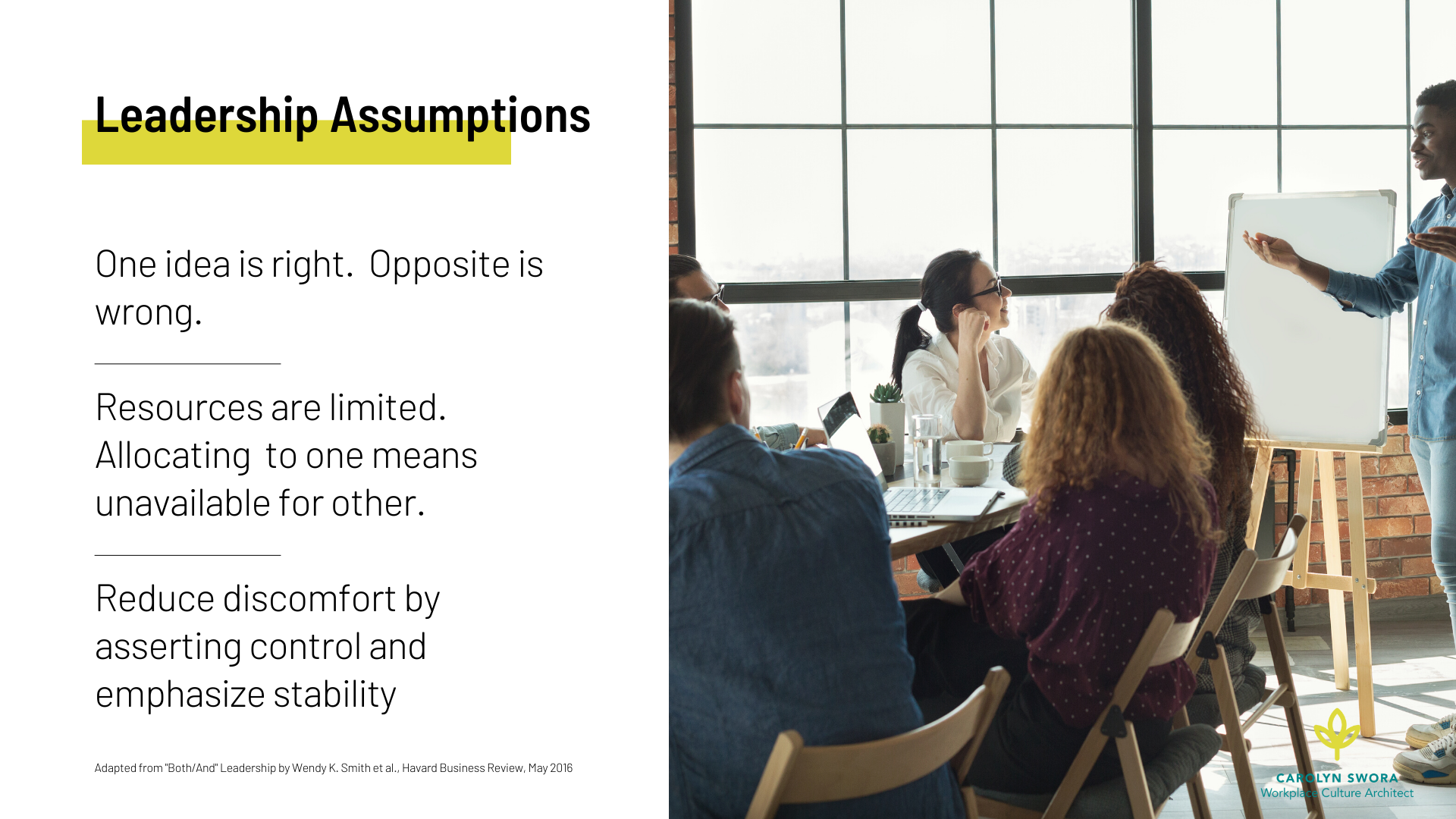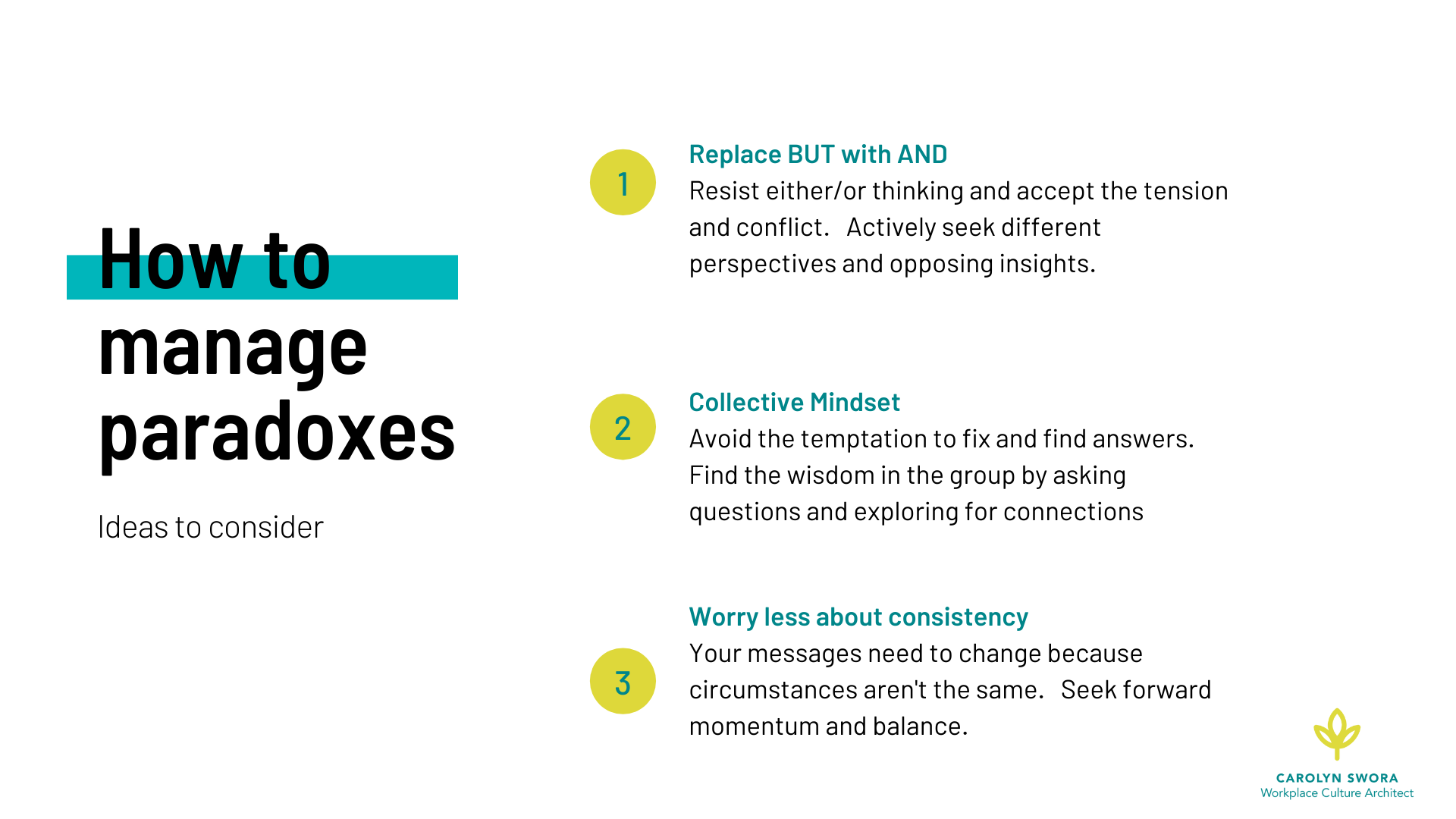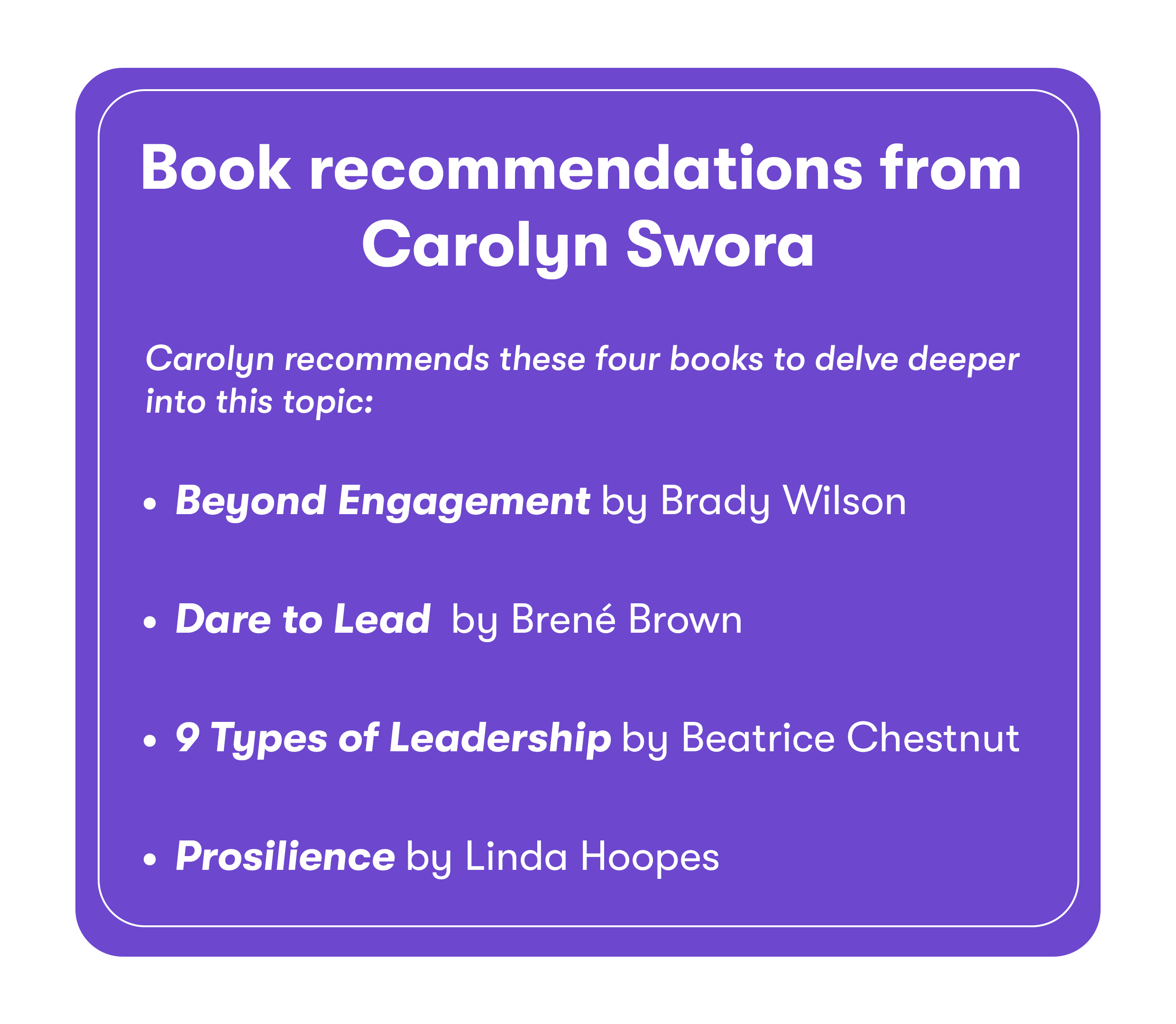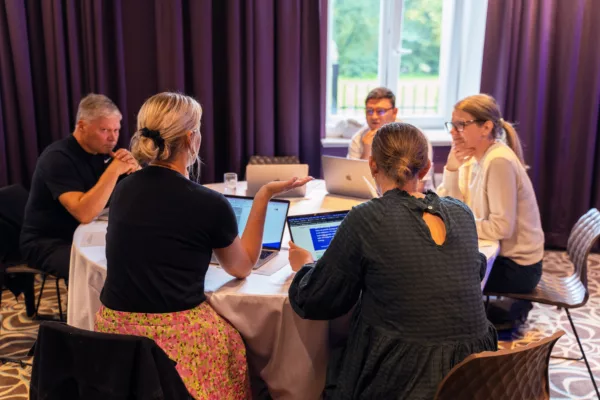
Leading virtual and hybrid teams: How to build trusting relationships
Many organizations are reaping the benefits of a virtual workforce, including cut costs from reduced office space and less travel. But many leaders also worry that this model will come with long-term costs and question how to maintain employee effectiveness, engagement, and loyalty with hybrid teams.
A top concern among leaders is how to build strong teams and maintain relationships in virtual and hybrid environments. Trust is always a key ingredient, but how exactly can you build trusting relationships within your team on screen and in person?
Carolyn Swora is a leadership and culture consultant, a certified Dare to Lead™ facilitator, a personal resilience practitioner, and a Howspace partner. This article will break down four key ideas for building trusting relationships in virtual and hybrid teams, inspired by Carolyn’s insights.
Resist binary thinking and actively seek different perspectives
Too often, the work world is binary. We can make assumptions that confine our thinking and limit our problem solving abilities. Consider these either/or beliefs. How well would they help us manage during a pandemic?

“Paradox is at the heart of great accomplishments, but it can be difficult to get there,” says Carolyn.
Strong leaders resist either/or thinking and accept tension and conflict. For example, leaders have been faced with the paradox of merging work and home personas for themselves and their teams. “I believe that is the ultimate paradox—how can I be authentic, human, and empathetic—and all those things that are important to me as an individual—and still deliver business results? We can do both, but we have to look at it a bit differently, unlearn some things, and bring in some new habits” explains Carolyn.
Carolyn walks us through a scenario of and/or thinking when it comes to work and home personas: Some of us might have thought “I can’t be a good parent and still be a really good employee” or “I can’t look after everything at home and still be a good employee in the middle of a pandemic.” How can we hold that tension and try to look at it from a different perspective? You might say to yourself, “Maybe I can be a good parent, and I can still be a good employee. But what do I need to change in the way that I’m thinking and how I’m showing up to allow that to happen?”
Balancing different perspectives embraces our humanity in the workplace and builds trust within the team—especially during times of change.

Embrace vulnerability
Vulnerability used to be seen as a weakness, but leaders like Brené Brown have repositioned it as a superpower.
“There are a ton of myths around vulnerability. But vulnerability is simply an emotion we experience when we don’t know the outcome,” says Carolyn. The problem is that we cling to predictability, especially during tough times.
“The belief that we can’t build trust with teams virtually can get in the way of us trying to lead through this vulnerability. But Covid has really shown us that we don’t have control over a lot of things,” she continues.
For example, let’s say you’re about to walk into a meeting where there’s a heated topic you need to discuss. If you’re embracing vulnerability, you won’t avoid that tough conversation. Instead, you’ll get that conversation going—despite the pit in your stomach and knowing your colleague will have a different opinion than you. And you’ll worry less about being liked or that someone will be upset with you.
“Vulnerability is simply an emotion we experience when we don’t know the outcome”
By not shying away from those difficult conversations, letting go of control, and staying curious, you’ll earn your team’s trust.
Carolyn shares a simple example of how she got a team talking about the elephant in the room. “Howspace was a brilliant tool to allow an anonymous conversation to occur in a way that protected everybody but also allowed them to lean into vulnerability.”

This question, as seen above, opened up conversations around what wasn’t happening. After participants shared their thoughts and read others’ comments, the team went into break-out groups. “This conversation didn’t fix everything, but it introduced vulnerability into this team in a way that was meaningful for them,” says Carolyn.
Ask questions and explore for connections
“In the effort of trying to reduce discomfort, we try to emphasize stability and assert control,” says Carolyn. “Instead of trying to find an answer or solution alone, find the wisdom in the group. Ask questions, explore for connections. You don’t need to wrap up meetings with a pretty bow and have an answer,” she continues.
Uncertainty and change is uncomfortable for a lot of people. But remember you can still have trust with high levels of discomfort.
There’s often not one right or wrong answer, so leaders need to make decisions with the information they have at the time in the best way that they can.
By engaging your entire team through continual dialogue and gathering discussions, ideas, and solutions in one single place, it’s easier to keep them involved and engaged. And with an AI-powered digital platform that allows you to objectively analyze and quickly make sense of the dialogue, it’s a lot easier to find the wisdom in the group.
“Instead of trying to find an answer or solution alone, find the wisdom in the group.”
For example, Carolyn uses Howspace to engage large groups in her workshops. With one group, she shared a collection of images and invited people to use the chatbox to answer the prompt: “Think about a challenge you have recently experienced or are currently experiencing. From the set of pictures, choose the one that best represents your feelings about this challenge.”
“We had a whole bunch of people contribute, and we were able to roll all that up and get a nice summary. Even though I couldn’t see over a hundred people in the audience, I was still able to interact and hear from them,” says Carolyn.
“With Howspace, people can communicate en masse. So you can actually connect with them more efficiently and engage a broader audience. It levels the playing field, and you can also leverage social learning,” she continues.
Have a consistent process for making decisions
“How I was trained as a leader is that you have to be consistent with your messaging. Well, that’s gone out the window with Covid. Organizations had to change their messaging on a day-to-day and week-to-week basis,” says Carolyn.
And when circumstances change so quickly, your messaging will need to change. Rather than worrying about consistency with your message itself, focus on the transparency of the process.
“The process needs to be consistent. But the actual responses can change,” says Carolyn. Making transparent decisions and involving every participant is a sure-fire way to build trust within your team.

Want more tips for leading hybrid teams? Download our Hybrid work model playbook for research-backed insights, tips, and strategies for succeeding with hybrid work.
You might be interested in these as well
View all
Make Your Decision-Making More Inclusive and Effective
As a leader, you want to make decisions that drive your organization forward and engage your employees. Participatory decision-making offers […]

The best change management tools for successful organizational transformation
Embracing change within organizations can be challenging, as people naturally resist it. However, utilizing the right change management software can […]

Top 7 Virtual Organizational Transformation Strategies
When it comes to organizational transformation strategies and how to effectively lead change in a virtual environment, my pro tip […]